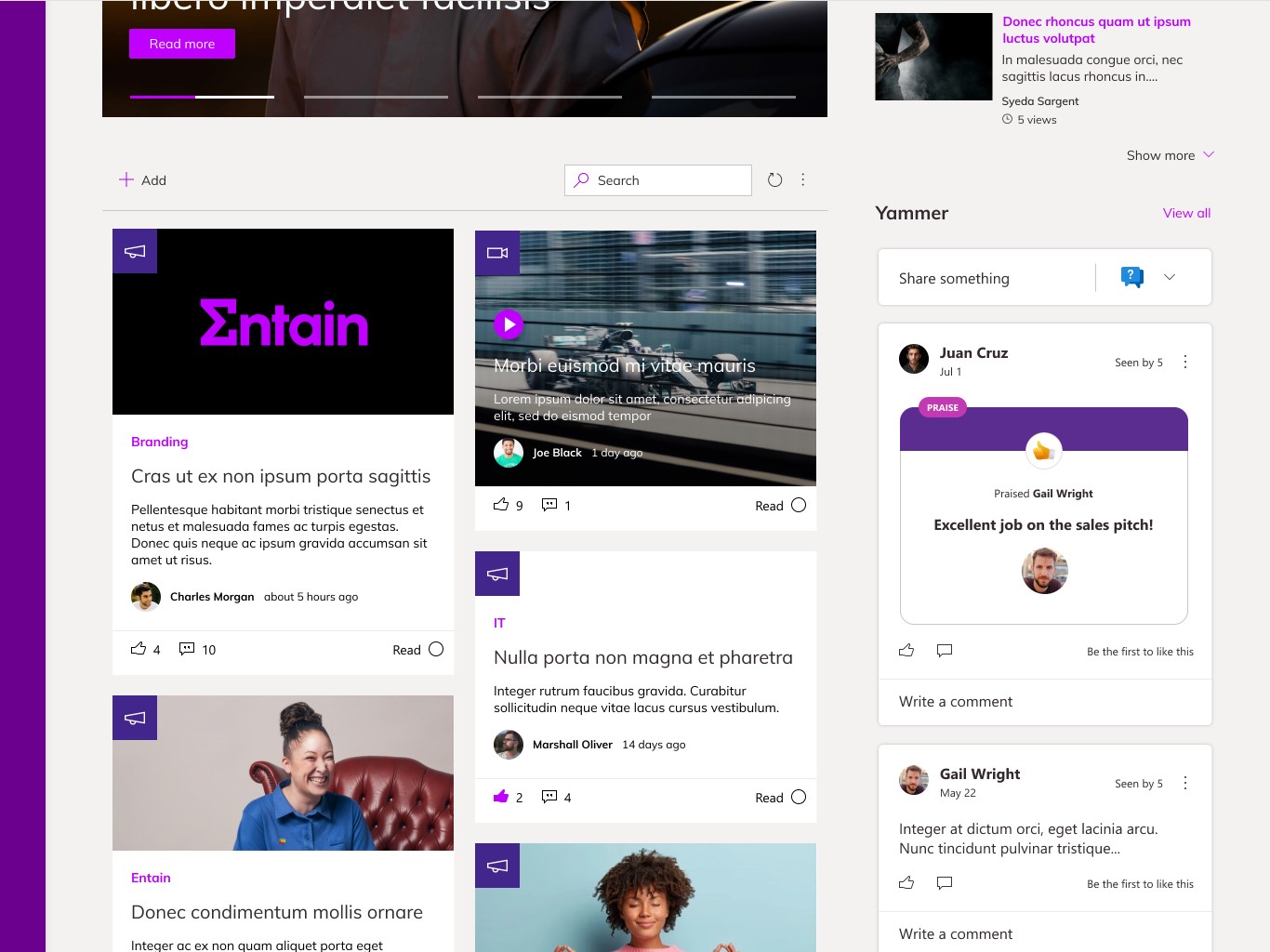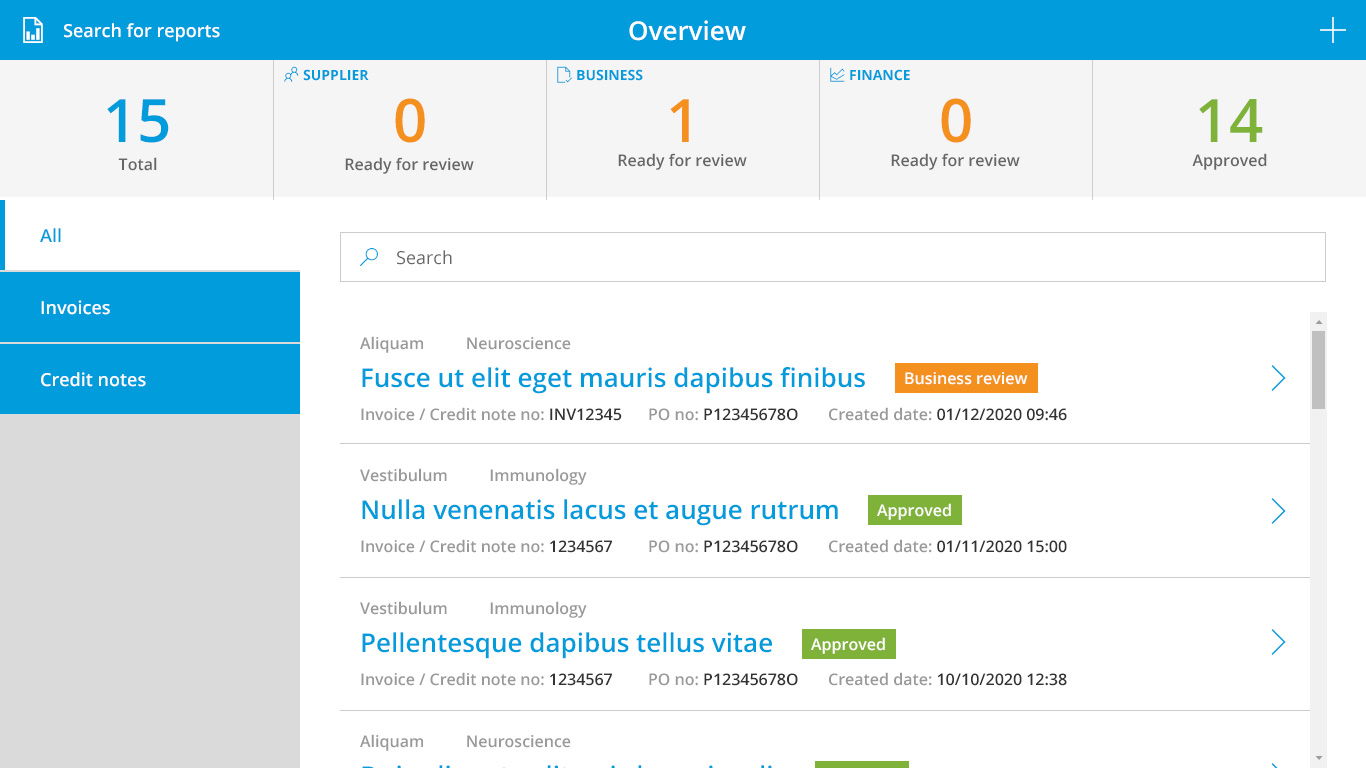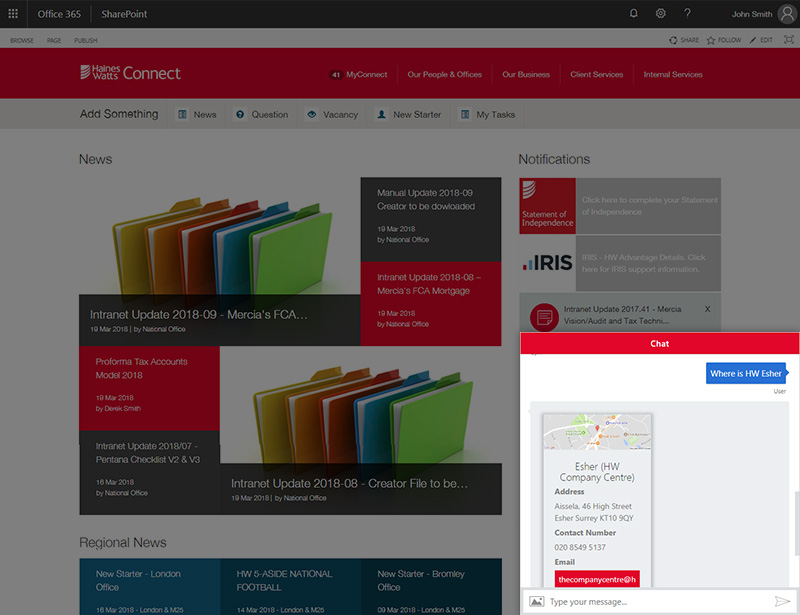For anyone using SharePoint as the base technology for their intranet or digital workplace, integrating different tools, applications and platforms into SharePoint is a must. Integrations can bring value to your SharePoint sites or intranet in various ways, including by:
- Helping employees to get tasks done, including completing simple transactions without even having to visit some of the applications in question
- Making it easier for employees to reach core applications across the enterprise, with SharePoint acting as the point of entry to different tools and applications
- Helping employees find important information that might be hidden, lost or siloed within different applications, including when not all staff have licenses
- Supporting process improvement and workflow that involves more than one application, driving efficiency and productivity gains
- Supporting adoption and use of individual tools.
Integrations have moved from difficult to doable
Over the past year, we have seen more and more customers come to us with questions and requests relating to SharePoint integrations. This is partly because many digital workplace teams are realising the value of integrations as a key part of digital employee experience, particularly with the increase in remote and hybrid working due to the Covid-19 pandemic. However, its also because integrating applications within SharePoint is now easier, faster and cheaper, thanks to:
- The effortless integrations between Microsoft 365 tools that already take place, often with SharePoint or Microsoft Teams as the centre of the digital workplace experience
- Microsofts support for an extensive library of connectors out-of-the-box for popular enterprise applications such as Salesforce and ServiceNow
- Better APIs and support for Single Sign-On via AAD as a prerequisite across different products
- Some integrations now being achievable through configuration rather than customisation, supported by Microsoft.
This has effectively flipped the notion of SharePoint integrations from being an expensive process prone to errors in which highly specialised developers have to do all the heavy lifting, to one in which highly effective integrations are now a core objective of good SharePoint implementation. While it is still important to involve experienced people for an enterprise-wide integration, views have shifted from SharePoint integrations being complicated and difficult, to being far more accessible.
Nine popular SharePoint integrations
There are a number of common integrations with SharePoint that deliver value for both employees and organisations. Here are nine key ones to consider.
1 Microsoft Teams
The explosion into heavy usage of Microsoft Teams across many enterprises in recent months continues to be quite remarkable. In terms of SharePoint and Teams integration, as both applications are core pillars of Microsoft 365, the two are already integrated in some respects a Team will have a SharePoint library, for example.

In terms of a SharePoint intranet or communication or hub site, a very useful Teams integration to consider is to provide a central directory of Teams spaces which users can browse through, find spaces of value and then apply to join them, using workflow to notify the administrator of particular Teams. This also brings visibility to Teams spaces and supports governance in areas such as reducing duplication of sites.
Another valuable SharePoint integration is providing a personalised list of Teams which an individual person is a member of with links to each space; this is very effective for those users who are not in Teams everyday and dont have the application open by default, so might not be able to find the link to the space they need immediately.
2 Yammer
Yammer is perhaps the most extensive integration with SharePoint to date, providing activity feeds and powering conversations within SharePoint sites and intranets. With Yammer being the key tool to drive social collaboration, professional communities and enterprise-wide conversations, the benefits of Yammer integration with SharePoint to bring content, discussions and collaboration together are pretty clear.

Typical SharePoint integrations involving Yammer include:
- Using Yammer as the commenting engine for news and updates
- Giving users oversight on Yammer discussions through an embedded feed on a SharePoint intranet homepage
- Inviting discussions on broader topics where content and conversations provide important context for each other
- Creating support pages for services or applications where an embedded Yammer community allows users to direct questions to specialists.
3 Dynamics and Salesforce: CRM and marketing platforms
Salesforce and Dynamics tend to be the core Customer Relationship Management platforms used by organisations to both store customer data and drive sales and marketing processes. This information is not only critical for sales and marketing staff, but is also likely to be used by any customer-facing staff; therefore, integration with a wider SharePoint environment such as an intranet can be extremely useful. Although Dynamics may be more closely integrated because it is a Microsoft product, Salesforce integrations with SharePoint are increasingly common.
The kind of SharePoint integrations that make sense can be:
- Allowing all users to search for customer data or sales collateral within the core intranet or enterprise search
- Providing one source of truth for any information that relies on showing customer data, for example, generating a list of clients available on the intranet that might link to other project data
- Providing updates that alert staff, such as new opportunities that are logged on Salesforce or Dynamics and need to be reviewed for conflicts of interest
- Triggering workflows that might involve SharePoint and Salesforce, for example, automatically creating a SharePoint page for information about a client or project, or creating a form on SharePoint that updates information on Salesforce.
4 Workday, SAP and Oracle: HR and ERP systems
A staple integration on SharePoint sites and intranets is that of HR and ERP systems that drive employee self-service, easing the pressure on busy HR teams, and saving time for employees and their managers. SharePoint is often the most convenient platform for employees to carry out simple transactions and view data in a way that means they dont have to visit the core system in question; it can also provide a better user interface. Here, synchronisation between HR data on a system like Workday or SAP and Active Directory is important to underpin these integrations.
Typical integrations with HR and ERP systems such as Workday, SAP and Oracle (as well as other HR-related technology solutions) include the ability for employees and managers to:
- View and book annual leave
- Approve annual leave
- View a payslip
- Update core HR and personal information
- View and amend benefits information
- Carry out performance review related tasks.
5 ServiceNow, Jira or Zendesk: IT and HR support
Just as HR system integrations with SharePoint relieve pressure on busy HR professionals by supporting employee self-service, SharePoint integrations with ticketing and support platforms like ServiceNow, Jira and Zendesk also aid helpdesk teams in IT and HR through self-serve approaches. Here, an integration with ServiceNow or Zendesk can drive access to content and allow users to carry out tasks through:
- Viewing FAQs and Knowledge Base data to answer queries
- Logging support tickets, saving time for both employee and support teams with pre-populated information on forms or guiding users to give the right information
- Allowing users to track progress on support tickets without having to contact the helpdesk.
6 Condeco and other meeting room booking systems
Another core integration with a SharePoint environment that delivers value is with meeting room booking systems such as Condeco; these can also provide wider desk-booking systems. Here, a SharePoint integration can allow users to view and book a meeting room or desk through a central SharePoint site or intranet; we see this becoming more important in the new era of hybrid working that is likely to develop in the aftermath of the pandemic.
7 PowerApps and the Power Platform
The Microsoft 365 Power Platform (PowerApps, Power Automate, Power BI, Virtual Power Agents) is already driving the creation of powerful business apps, workflows and data visualisations that help to improve a range of different business processes. Integrations between SharePoint and Power Platform tools can be hugely valuable and are used frequently, either to power some of the content and data behind the process through a SharePoint list, or to provide a user interface for accessing or submitting information.

If you are creating a Power App, embedding it into SharePoint is often the best way to create a desktop view or interface for the app, helping to drive adoption and use. If you are using Power BI, embedding reporting into SharePoint can also open it up for everybody, for example, in surfacing important sales data or enterprise KPIs in real time on an intranet homepage.
8 Bots
Chatbots and conversational user interfaces are increasingly common across the digital workplace landscape, helping users to find information and complete tasks. Bots are often accessed through Microsoft Teams, but it also make sense for them to be accessed within SharePoint as users are often logged on there to find information and complete tasks. Any team deploying a chatbot should consider a SharePoint integration.

9 LMSs and Learning Platforms
An area where we are seeing significant levels of interest is SharePoint integrations with Learning Platforms or Learning Management Systems. This brings learning into the heart of the digital workplace by:
- Providing more visibility of courses and course material
- Allowing users to carry out mandatory training and keep track of what needs to be completed
- Allowing users and managers to view their training records
- Supporting employee onboarding processes involving training.
For example, we are seeing a lot of interest in LMS365, which can be seamlessly integrated with SharePoint straight out-of-the-box.
We love SharePoint integrations!
Here at Content Formula, we love SharePoint integrations because we know the value they bring to our clients. If youd like to discuss your integration strategy, what to integrate into your SharePoint intranet or have any general questions, then get in touch!

